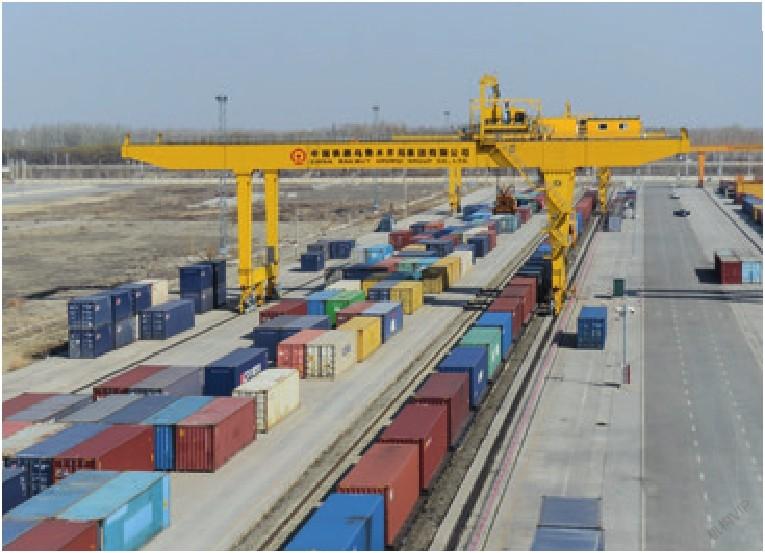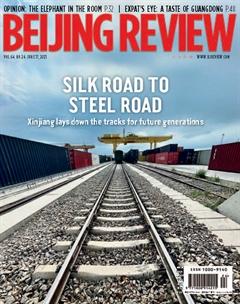A RENEWED GATEWAY TO THE WORLD
By Ryan Perkins

Xinjiang, an autonomous region in northwest China, is home to vast deserts and mountains and many ethnic minority groups. The ancient Silk Road trade route linking China and the Middle East once passed through Xinjiang, and its legacy can still be seen everywhere. The dry port of Horgos today breathes new life into this earliest of routes.
Horgos, once a sleepy backwater straddling the border of Xinjiangs Ili Kazak Autonomous Prefecture and Kazakhstan, has been transformed as a key part of Chinas Belt and Road Initiative. Its strategic position has turned the city into the one of the largest dry ports in the world and a starting point for the China-Europe railway. And demand is on the rise.
Thanks to the dry port, trains and trucks can carry goods from east China to West Europe in around two weeks, compared to a several-week journey by container ship or vastly expensive air freight.
Harboring new development
As economies around the world reeled from COVID-19-related countermeasures, demand for made-in-China products soared. China posted a huge $535 billion trade surplus in 2020 according to the General Administration of Customs of China; a 3.6 percent increase in exports over 2019 to a total of $2.6 trillion; and a 1.1 percent reduction in imports. At the same time, China overtook the U.S. to become the EUs top trading partner in goods, according to Eurostat data.Due to various reasons, shipping rates reached a 12-year high at the end of last year. The Suez Canal blockage also sounded alarms for international traders, showing how important it is to have alternatives. This sudden spike in sea freight rates and increased shipping delays—all combined to make the rail freight option very attractive in 2020.
At Horgos itself, three giant rail-mounted gantries rise from the desert and meticulously move up and down the lengths of freight trains arriving from China and load them onto trains waiting on Kazakhstans tracks all backed by a snow-capped mountain range. These giant cranes are needed to transship containers onto Kazakhstans trains and vice versa as Kazakhstans rail uses slightly wider former Soviet rail lines. In addition to the railway terminal, a new highway crossing from China to Kazakhstan opened in November 2018.
According to Yu Chengzhong, Chairman of the Board of Jinyi International Trade Group, 45 percent of the ports cargo already originates from outside Xinjiang. He explains how provinces closer to the sea are switching to the overland route; from oranges in Hunan Province, to consumer products in Henan Province.

